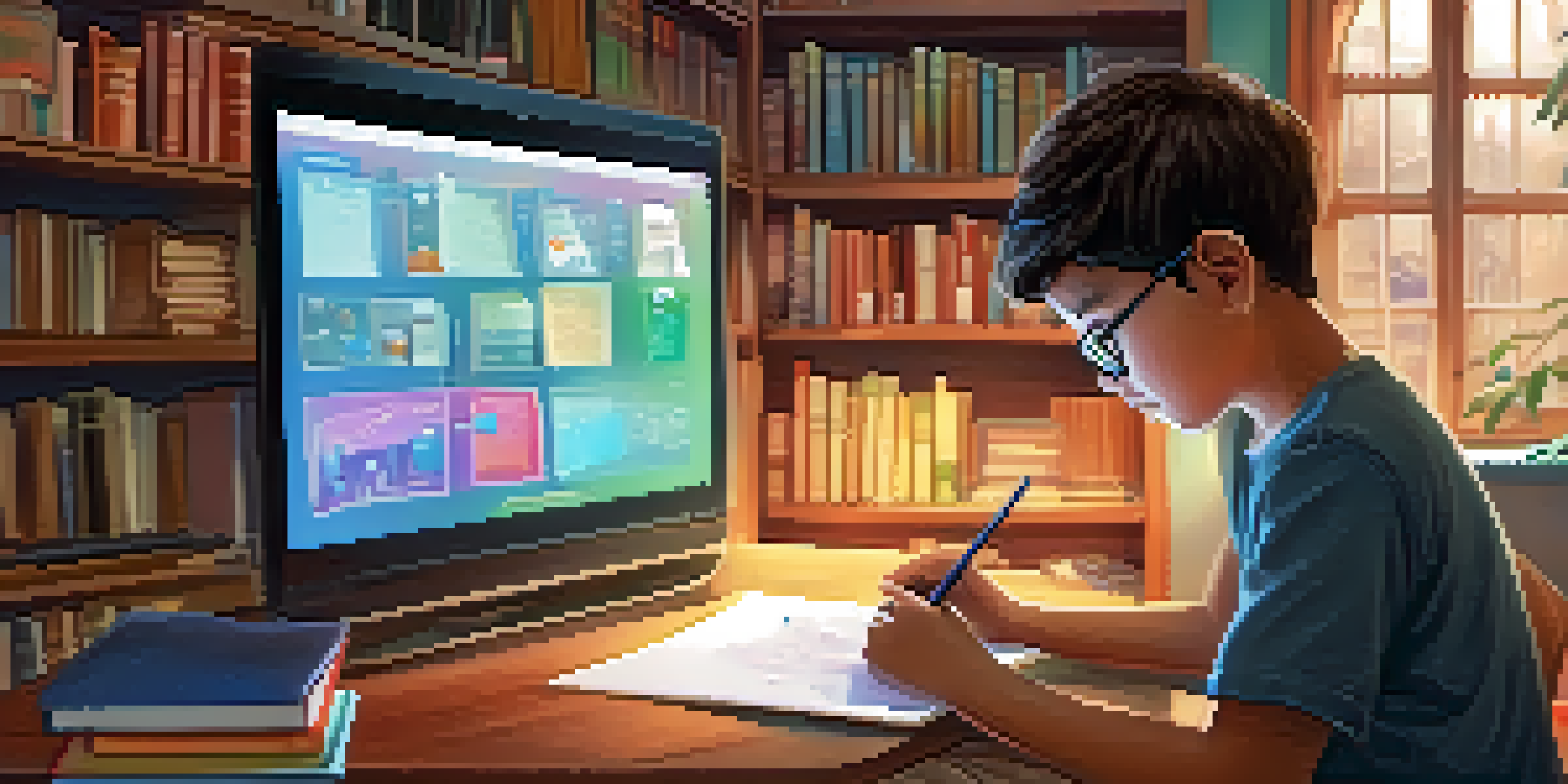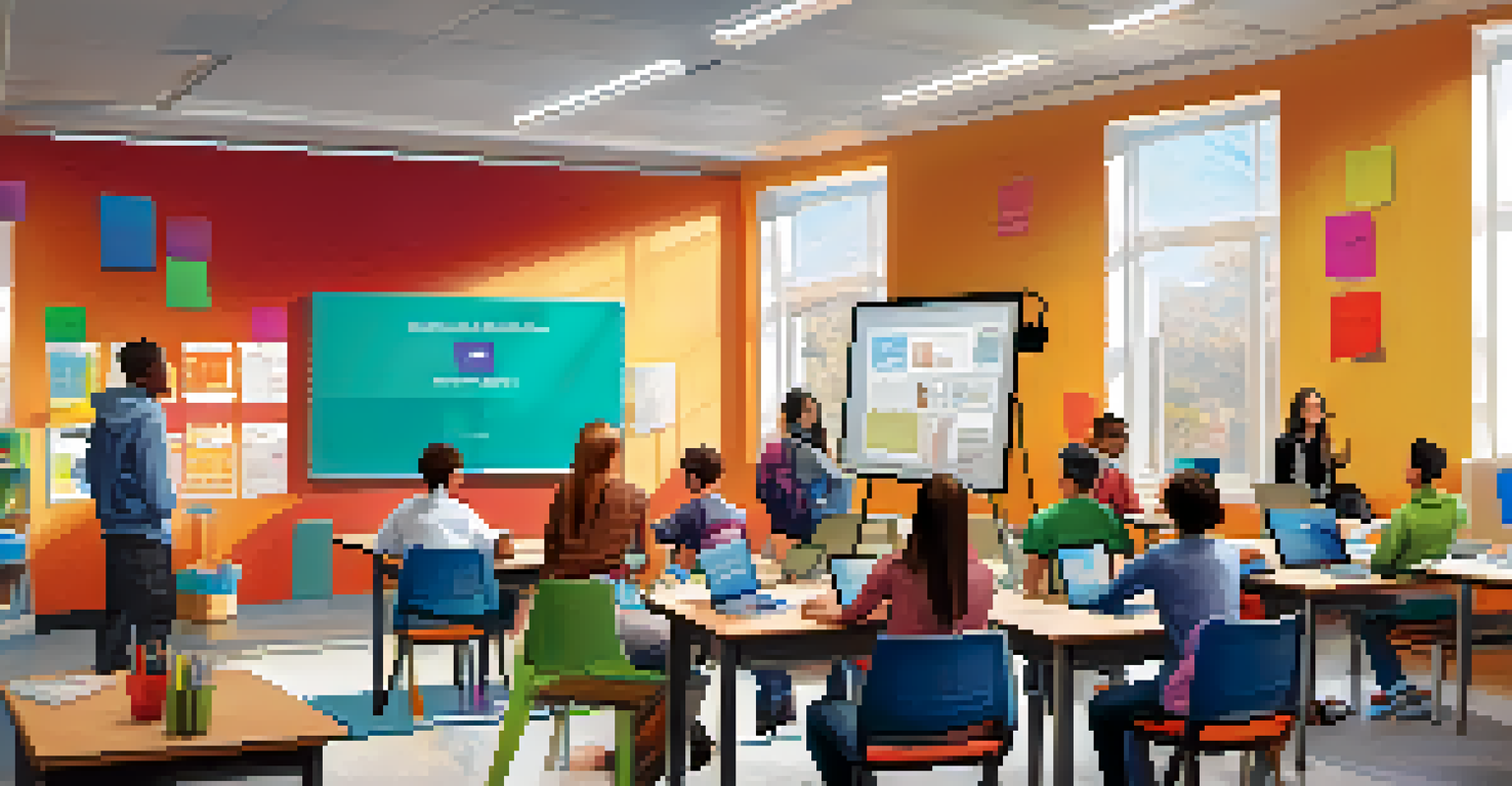Blended Learning and Its Effect on Student Learning Styles

Understanding Blended Learning: A Modern Approach
Blended learning combines traditional face-to-face teaching with online resources. This hybrid model allows educators to utilize the best of both worlds, creating a more flexible learning environment. By integrating technology, students can engage with materials at their own pace, which can enhance their understanding and retention.
Blended learning is not just a trend; it’s a transformative approach that recognizes the diverse needs of learners in our ever-evolving educational landscape.
Imagine a classroom where a teacher delivers a lecture while students simultaneously access supplementary videos or articles online. This dynamic setup not only keeps students engaged but also caters to various learning preferences. Some students thrive in a traditional setting, while others may benefit from interactive online materials.
Ultimately, blended learning encourages students to take ownership of their education, giving them tools to succeed in a way that resonates with them. This can lead to increased motivation and better academic outcomes, as learners feel empowered by their choices.
The Diverse Landscape of Learning Styles
Every student has a unique way of absorbing information, which is often categorized into learning styles. Common styles include visual, auditory, and kinesthetic, each representing different methods of processing and understanding content. Recognizing these styles is crucial for effective teaching.

For instance, visual learners may excel when presented with diagrams or videos, while auditory learners often benefit from discussions and lectures. Kinesthetic learners, on the other hand, thrive through hands-on activities. Blended learning can effectively cater to these different styles by providing a variety of resources.
Blended Learning Enhances Engagement
By combining traditional teaching with online resources, blended learning creates a dynamic, flexible environment that keeps students engaged and motivated.
By leveraging technology, teachers can create a more inclusive environment that addresses the needs of each learning style. This approach not only enhances comprehension but also fosters a sense of belonging among students, making them feel valued and understood.
How Blended Learning Supports Visual Learners
Visual learners often find it easier to grasp concepts through images, videos, and infographics. In a blended learning environment, these students can access a wealth of visual content online, reinforcing their understanding of complex topics. This visual engagement can lead to deeper connections with the material.
The future of education will be shaped by those who embrace technology to enhance learning, making it more accessible and personalized for every student.
For example, a science teacher may use animations to illustrate biological processes, allowing visual learners to see concepts in action. This representation can make the information more tangible and relatable. Additionally, interactive online platforms often include visual simulations that can enhance learning experiences.
By providing ample visual resources, blended learning helps visual learners excel academically. This tailored approach not only boosts their confidence but also solidifies their grasp of the subject matter.
Engaging Auditory Learners Through Blended Learning
Auditory learners thrive on spoken information, making discussions and lectures their preferred learning methods. Blended learning allows these students to access podcasts, recorded lectures, and interactive discussions online, enhancing their educational experience. This audio-rich environment can help auditory learners connect with the material more effectively.
Imagine a history class where students can listen to a renowned historian’s lecture while following along with their textbook. This combination of auditory input and reading can create a richer understanding of historical events. Furthermore, online discussion forums provide auditory learners an opportunity to engage in dialogue, reinforcing their learning.
Supports Diverse Learning Styles
Blended learning caters to various learning styles—visual, auditory, and kinesthetic—by providing diverse resources that enhance comprehension and inclusivity.
By integrating auditory resources into a blended learning framework, educators can cater to the needs of auditory learners. This approach ensures that these students are not left behind and can engage with the curriculum in a meaningful way.
Supporting Kinesthetic Learners in a Blended Setting
Kinesthetic learners excel through hands-on experiences and physical activities. Blended learning environments can support these learners by incorporating practical activities alongside traditional teaching methods. For example, a math lesson could include online simulations that allow students to manipulate variables and see real-time results.
Consider a blended science class where students conduct experiments in the lab while also engaging with virtual labs online. This combination can help kinesthetic learners solidify their understanding by applying concepts in a tangible way. Additionally, online platforms can offer interactive quizzes and challenges that require active participation.
By recognizing the strengths of kinesthetic learners, blended learning creates a more engaging educational experience. This approach not only facilitates deeper learning but also fosters enthusiasm and passion for the subject matter.
The Role of Technology in Blended Learning
Technology plays a pivotal role in the effectiveness of blended learning. It serves as a bridge between traditional teaching and modern educational techniques, allowing for greater flexibility and accessibility. From learning management systems to interactive tools, technology enhances the learning experience for all students.
For instance, platforms like Google Classroom enable teachers to share resources and track student progress seamlessly. These tools can also facilitate personalized learning, allowing students to work at their own pace and revisit materials as needed. Such adaptability is essential in catering to diverse learning styles.
Fosters Student Collaboration
Utilizing online platforms, blended learning encourages collaboration among students, enhancing critical thinking and preparing them for real-world teamwork.
Ultimately, the integration of technology within blended learning frameworks empowers both educators and students. It fosters a collaborative learning environment where everyone can thrive, making education more engaging and effective.
Blended Learning: Fostering Collaboration Among Students
One of the standout features of blended learning is its ability to promote collaboration among students. By utilizing online platforms, students can work together on projects, share ideas, and support each other’s learning. This collaborative approach not only builds community but also enhances critical thinking and problem-solving skills.
For example, students can engage in group discussions via online forums or collaborate on shared documents, allowing them to contribute their unique perspectives. This interaction can lead to a deeper understanding of the subject, as students learn from one another. Such teamwork prepares them for real-world situations where collaboration is key.

In fostering a collaborative environment, blended learning helps students develop essential interpersonal skills. These skills are invaluable as they prepare for future academic and professional endeavors, making them more well-rounded individuals.
The Future of Education: Embracing Blended Learning
As we look to the future, blended learning is poised to revolutionize education. With the ongoing advancements in technology and a growing understanding of diverse learning styles, educators are beginning to embrace this innovative approach. This shift has the potential to create a more personalized and effective educational landscape.
Imagine a future where students can seamlessly transition between online and in-person learning, utilizing resources that cater specifically to their needs. This flexibility will not only empower students but also prepare them for a world that increasingly relies on digital skills. Blended learning will play a vital role in equipping learners for success.
By embracing blended learning, we can create a more inclusive and engaging educational experience for all students. This evolution in teaching methods will ultimately lead to a generation of learners who are adaptable, curious, and ready to take on the challenges of tomorrow.